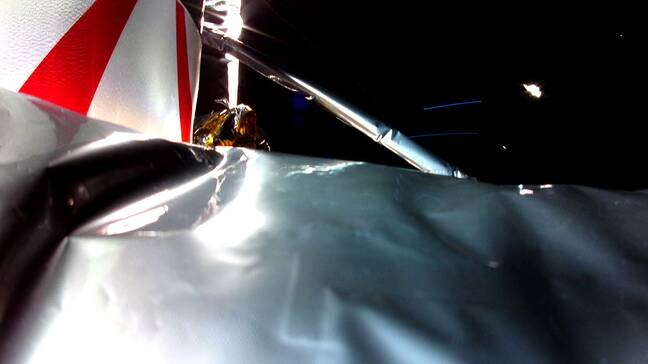Astrobotic's Peregrine packed with NASA science gear and other payloads may be a bust
The first commercial American Moon lander – built by startup Astrobotic to carry NASA instruments and private payloads to the lunar surface – is in trouble: the spacecraft's propulsion system malfunctioned shortly after launch on Monday.
Selected for NASA's Commercial Lunar Payload Services (CLPS) program, US-based Astrobotic was poised to become the first-ever company to successfully land on the surface of the Moon, a feat that has only been achieved by governmental space agencies in America, the Soviet Union, China, and India so far.
The company's Peregrine Lunar Lander suffered an anomaly and was forced to enter safe mode, despite being successfully launched into space earlier in the day.
"Unfortunately, it appears the failure within the propulsion system is causing a critical loss of propellant," Astrobotic said in its latest update.
"The team is working to try and stabilize this loss, but given the situation, we have prioritized maximizing the science and data we can capture. We are currently assessing what alternative mission profiles may be feasible at this time."
At 0218 ET (0718 UTC) the upstart's Peregrine Lunar Lander was launched atop the United Launch Alliance's Vulcan rocket from Cape Canaveral Space Force Station in Florida, USA.
The mission was off to a good start. Astrobotic confirmed its spacecraft had separated from the Vulcan rocket around 500 kilometres above the Earth.
The Peregrine Lunar Lander turned on and was connected to NASA's Deep Space Network to exchange telemetry signals.
NASA science bound for Moon after successful Vulcan Centaur launch
America's ambitious Artemis III likely to miss 2025 Moon landing date, auditors sigh
Problems began, however, when the Peregrine failed to orient its solar panels toward the Sun. Mission control adjusted the craft's position, allowing Peregrine's batteries to begin charging, but, with a lack of propellant and the unspecified propulsion system flaw, the lander probably won't be able to attempt a soft touchdown on the Moon.
Unfortunately, that means the 20 payloads sent by space agencies, universities, and private customers around the world, attached to the Peregrine Lunar Lander, will also – shall we say – fail to be used as specified. NASA will lose a laser retroreflector array, and four different spectrometers designed to study the lunar exospheres and soil as well as monitor radiation levels.
Meanwhile, Germany and Mexico's respective radiation detector and small robots will likely be destroyed too. Other payloads include time capsules, artwork, books, music, and cryptocurrency sent by private companies from the UK, Japan, Canada, Hungary, the Seychelles, and Argentina.
The US space agency's administrator Bill Nelson had warned that Astrobotic's Peregrine Mission One was risky.
"These high-risk missions will not only conduct new science at the Moon, but they are supporting a growing commercial space economy while showing the strength of American technology and innovation," he said after the launch.
"We have so much science to learn through CLPS missions that will help us better understand the evolution of our solar system and shape the future of human exploration for the Artemis Generation."
It's not clear where the spacecraft is right now and what will happen if and when it loses all its fuel, but it doesn't look like it'll get a chance to attempt a happy landing on the Moon. The Register has asked Astrobotic for comment. ®
Updated to add at 2200 UTC
Here's the latest from Astrobotic: It's received a snap from the craft, which confirmed there was a problem with the propulsion system judging by the state of an insulation layer. See below.

The team wrote:
We’ve received the first image from Peregrine in space! The camera utilized is mounted atop a payload deck and shows Multi-Layer Insulation (MLI) in the foreground. The disturbance of the MLI is the first visual clue that aligns with our telemetry data pointing to a propulsion system anomaly.
Nonetheless, the spacecraft’s battery is now fully charged, and we are using Peregrine’s existing power to perform as many payload and spacecraft operations as possible.
The biz also said its operators had been awake and working for more than 24 hours by this point. So, dunno, cut them some slack?


 BlockchainReporter
BlockchainReporter crypto.news
crypto.news Crypto Daily™
Crypto Daily™ BlockchainReporter
BlockchainReporter Optimisus
Optimisus DogeHome
DogeHome Crypto News Land
Crypto News Land Optimisus
Optimisus Crypto News Land
Crypto News Land






















